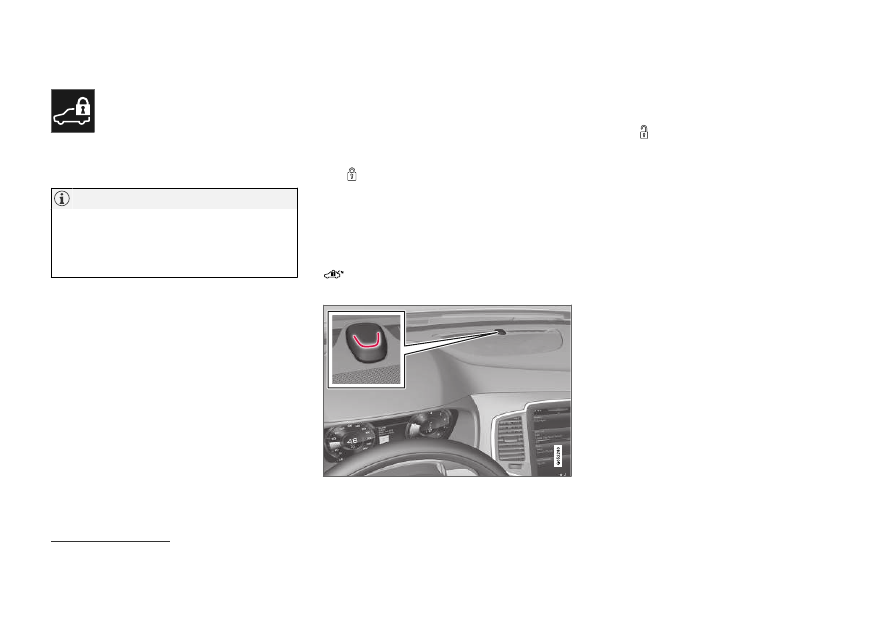Volvo XC90 Twin Engine (2019 year). Instruction - part 16

||
KEY, LOCKS AND ALARM
* Option/accessory.
274
In the event of alarm system failure
If a problem is detected in the alarm
system, a symbol and the message
Alarm system failure
Service
required
will appear in the instrument
panel. Contact a workshop - an authorized Volvo
workshop is recommended.
Do not attempt to repair or alter any of the
components in the alarm system yourself. Any
such attempt could affect the terms and con-
ditions of your insurance policy.
Related information
•
Arming and disarming the alarm (p. 274)
Arming and disarming the alarm
The alarm is armed when the vehicle is locked.
Arming the alarm
Lock and arm the vehicle by:
•
pressing the lock button on the remote key
.
•
touch the marked surface on the outside of
the door handle or the rubberized pressure
plate on the tailgate
21
.
If the vehicle is equipped with both keyless lock-
ing/unlocking* and power tailgate*, the button
on the lower edge of the tailgate can also
be used to lock and arm the vehicle.
A red LED light on the dashboard will flash every other
second when the vehicle is locked and the alarm is
armed.
Disarming the alarm
Unlock and disarm the vehicle alarm by:
•
pressing the unlock button on the remote
key
.
•
grip a door handle or press the tailgate's rub-
berized pressure plate
21
.
21
Only vehicles with keyless locking and unlocking* (Passive Entry).